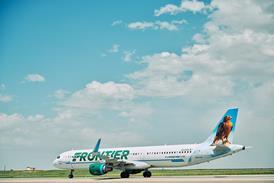Airbus is intending to introduce a further take-off weight hike to the A330neo, providing an enhancement to payload-range capability for the twinjet type.
Both variants of the A330neo – the -900 and -800 – entered service in 2018 with a maximum take-off weight of 242t, which was subsequently increased to 251t two years later.
But speaking during a briefing in Toulouse on 11 June, Airbus head of overall aircraft design Vincent Lebas said that a 253t variant is planned for 2028.
It will also feature a maximum zero-fuel weight of 183t.
Lebas says the changes are part of a continuous improvement effort for the A330neo, which is powered by Rolls-Royce Trent 7000 engines.

The Trent 7000 has already undergone a high-pressure turbine blade upgrade, in 2022, and Lebas says Rolls-Royce is developing an additional hot-section enhancement, for next year, to improve time-on-wing.
Lebas also states that the engine will be available with a 68,000lb (320kN) thrust rating in 2026.
Changes are being introduced this year, he adds, to take-off thrust application procedures in tailwinds.
Lebas tells FlightGlobal that the A330neo requires slow application of power to guard against airflow disturbance or separation at the engine inlet – a procedure which has been “up to now, very conservative”.
But analysis shows that the Trent 7000 and its nacelle have the “capability to cope”, he says, and revision of the procedure will enable “normal” thrust application in tailwinds up to 10kt.
Airbus recently obtained European certification for an A330neo performance-enhancement package featuring additional take-off configurations and faster landing-gear retraction.
Lebas adds that a high-altitude operations upgrade – enabling the A330neo to serve airports at elevations of 12,500ft – is expected to be approved by the European Union Aviation Safety Agency by the end of this summer.


























